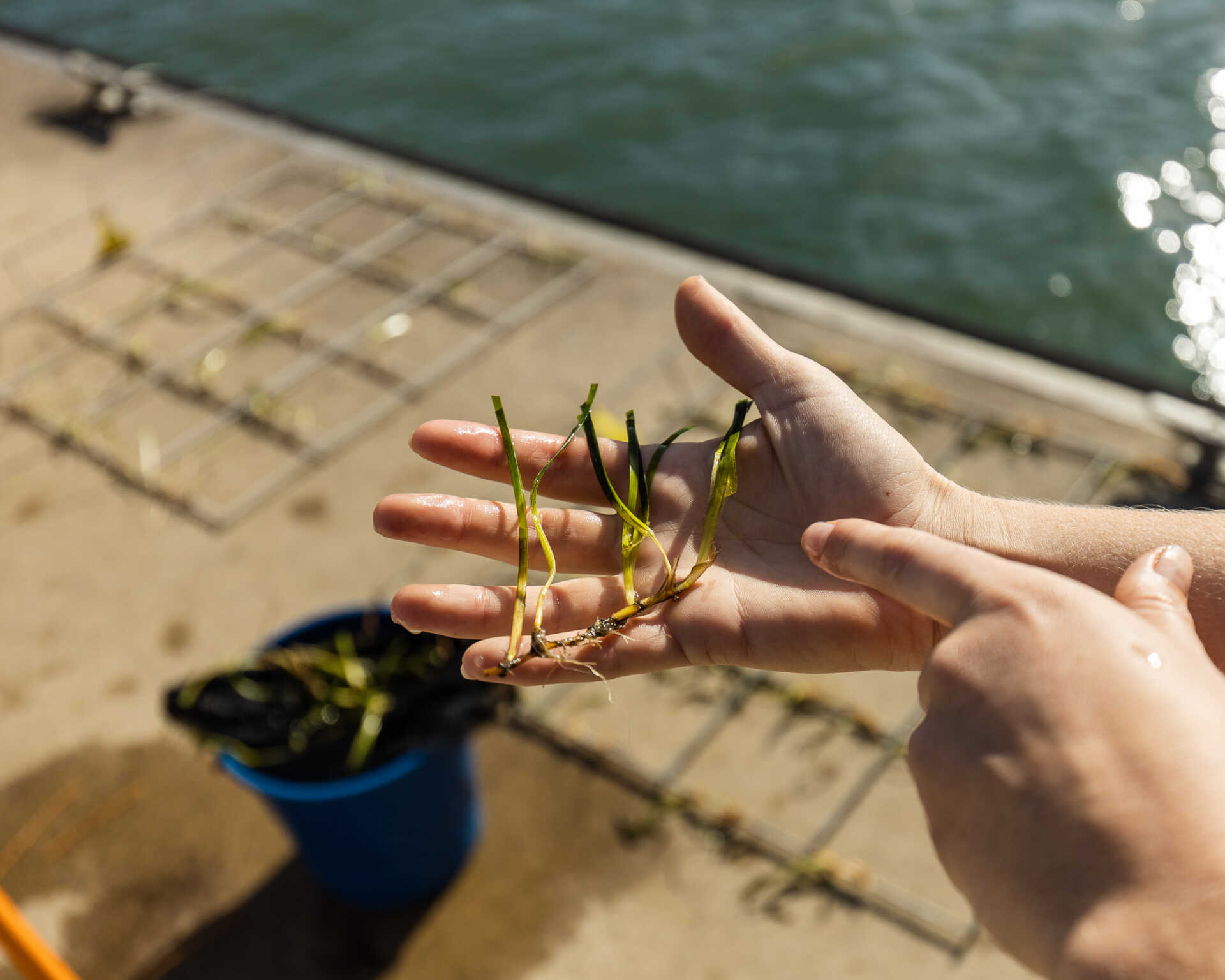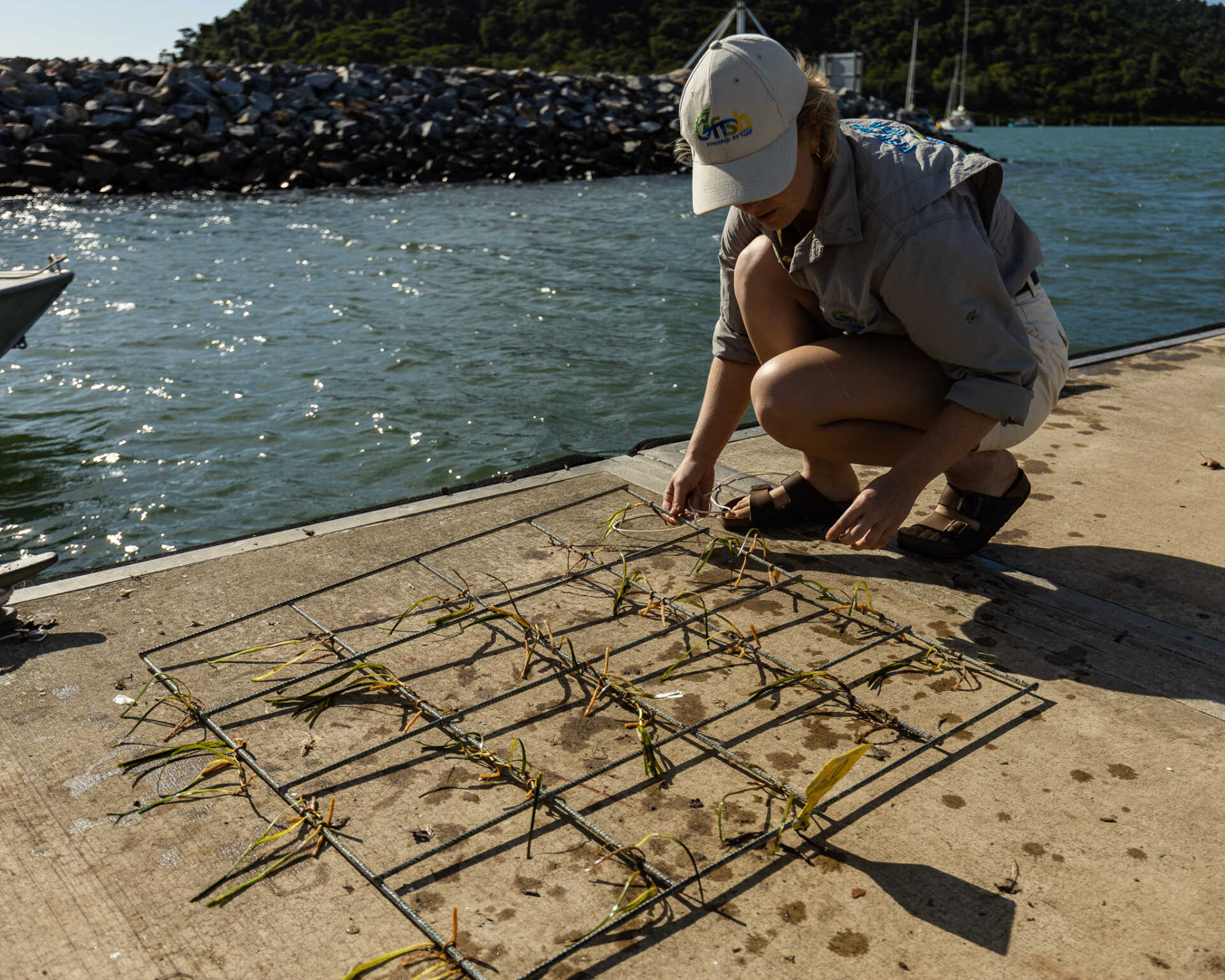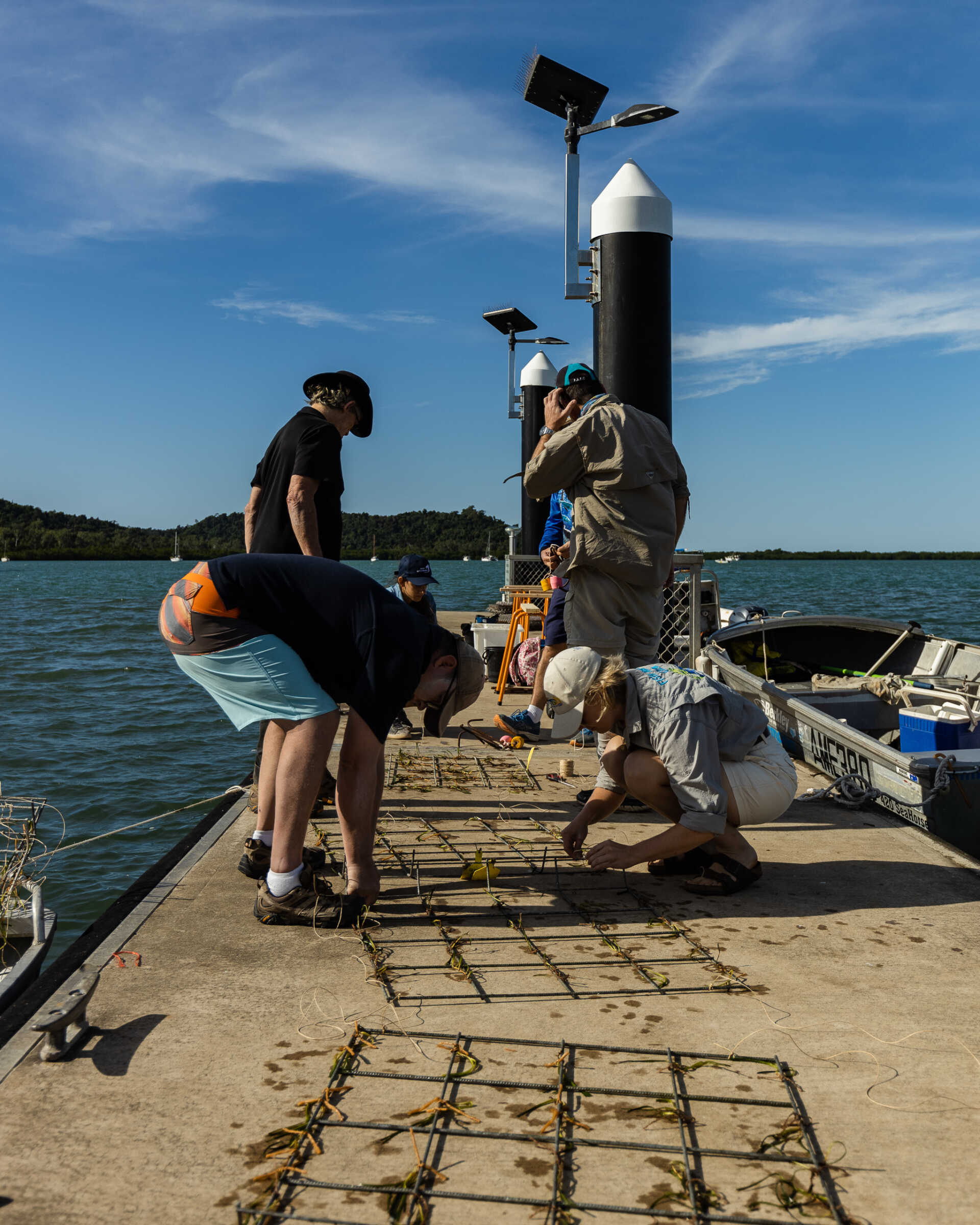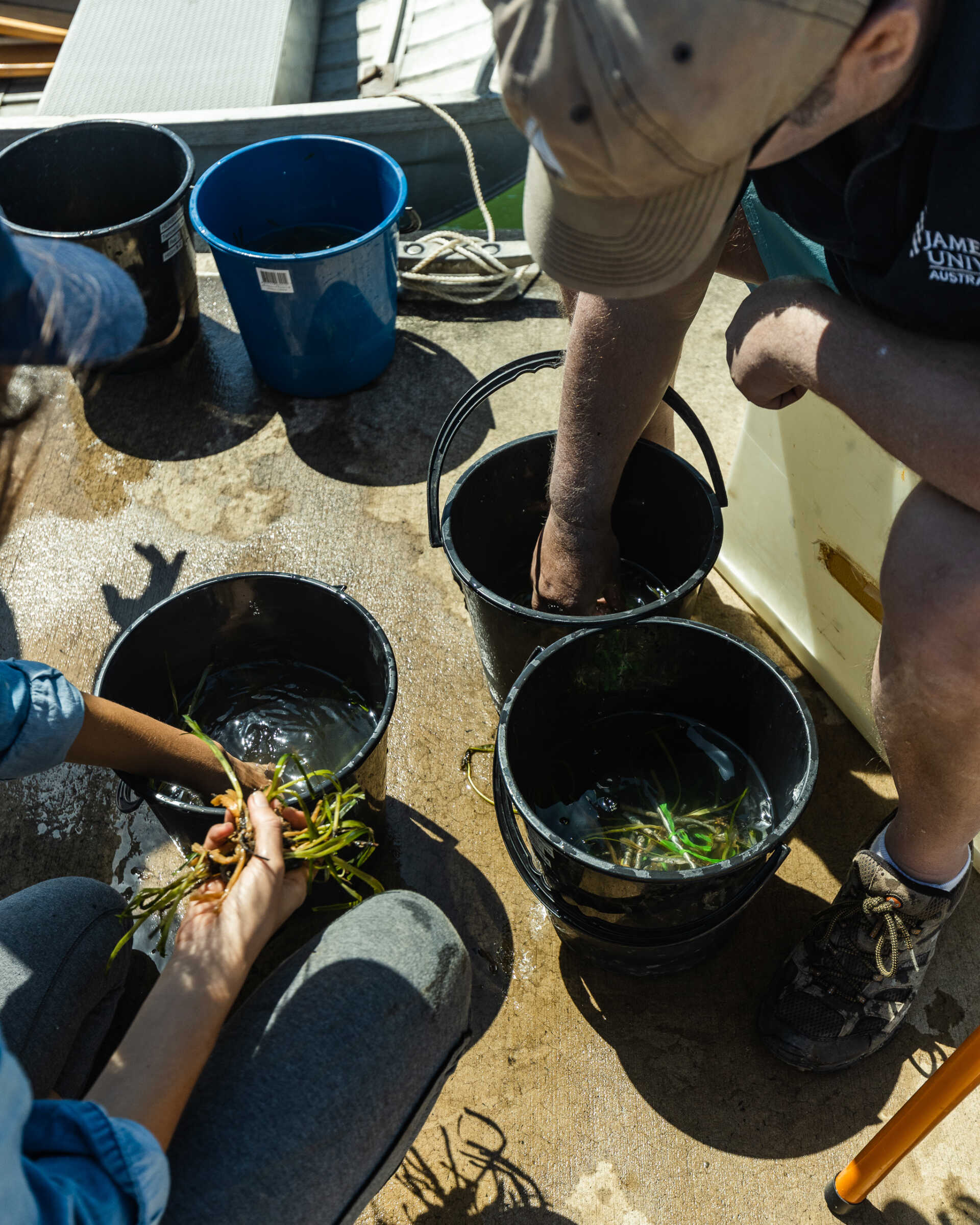Get up to date on what is going on in Mourilyan Harbour

Mourilyan Harbour, an estuary just south of Cairns, has been a focus site for scientists and OzFish volunteers over the last few months.
Here, the objective has been to bring back the seagrass meadows that were lost over a decade ago following damaging monsoon rainfall.
Seagrasses are an amazing nursery ground for some key recreational fish species in North Queensland including barramundi and mangrove jack.
They are also critical to healthy waterways and marine environments as they filter sediment and nutrients from coastal waters, are a food source for turtles and dugong, and store carbon in their sediments.
The meadows in Mourilyan Harbour were once thriving fish habitats full of juvenile prawns and fish but they have since been badly degraded.
Several years of heavy rainfall and cyclones leading up to 2010 deprived the marine plants of the light that they need to grow and because they were isolated from any other similar seagrass meadows, there was no way for them to come back by themselves.
Following the initial success of small-scale planting trials last year, the team is following up with a second trial.
This time, new techniques have been used, which includes deploying seagrass shoots attached to biodegradable mesh made from potato starch into areas of seagrass loss.
“Seagrass meadows provide a range of ecological and economic benefits. Getting the seagrass meadows back will be good news for local fishers,” said Dr Geoff Collins from OzFish.
The aim of the project is to produce a blueprint for future tropical seagrass restoration throughout the Great Barrier Reef and to return lost seagrass meadows and their associated fish into the harbour.
Working in estuaries in northern Australia, the team has had to deal with crocodiles, marine stingers, and mudflats where you can sink up to your waist.
To combat this, they’re developing methods where planting units can be deployed from boats into the shallow waters where seagrasses grow and are going to start monitoring their survival with drones at low tide.
“Getting the seagrasses back at Mourilyan Harbour could result in not only a greatly improved estuarine health score for the region but also a return of critical services that the local seagrasses provide”, said Chair of the Wet Tropics Waterways Partnership Professor Steve Turton.
Once successful restoration methods have been established, the partnership will be looking for funding opportunities to scale up their work to restore the seagrass in the harbour back to its original state.
The knowledge and experience from this project will then be applied more broadly along the Great Barrier Reef World Heritage Area Coast.
The project is in collaboration with James Cook University’s Seagrass Ecology Lab within the Centre for Tropical Water and Aquatic Ecosystem Research (TropWATER) and local Mandubarra Traditional Rangers.
If you want to get involved, or would like to start a project like this in your local waterway, contact your local chapter or message us on social media – it’s never too late to start a restoration project!



